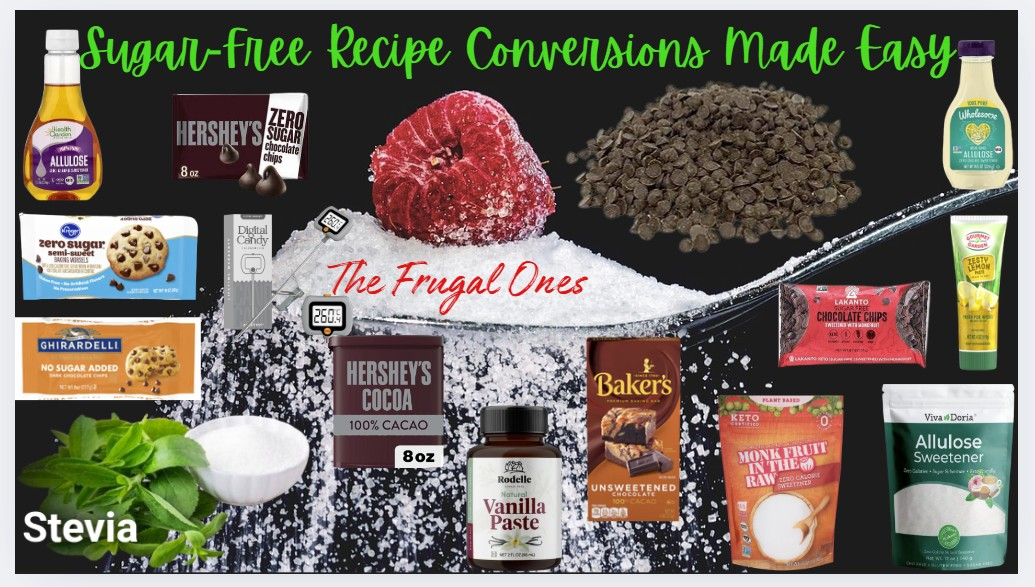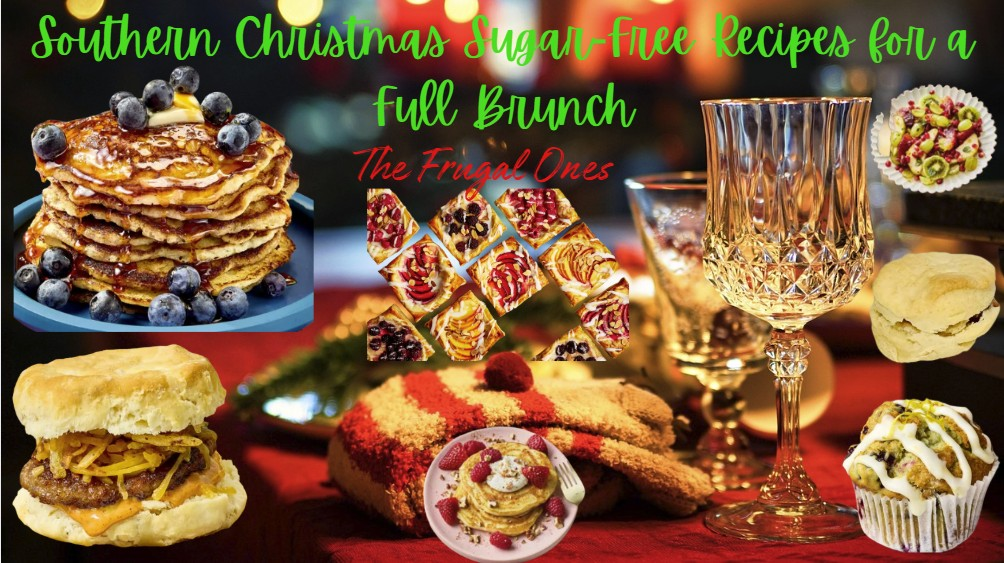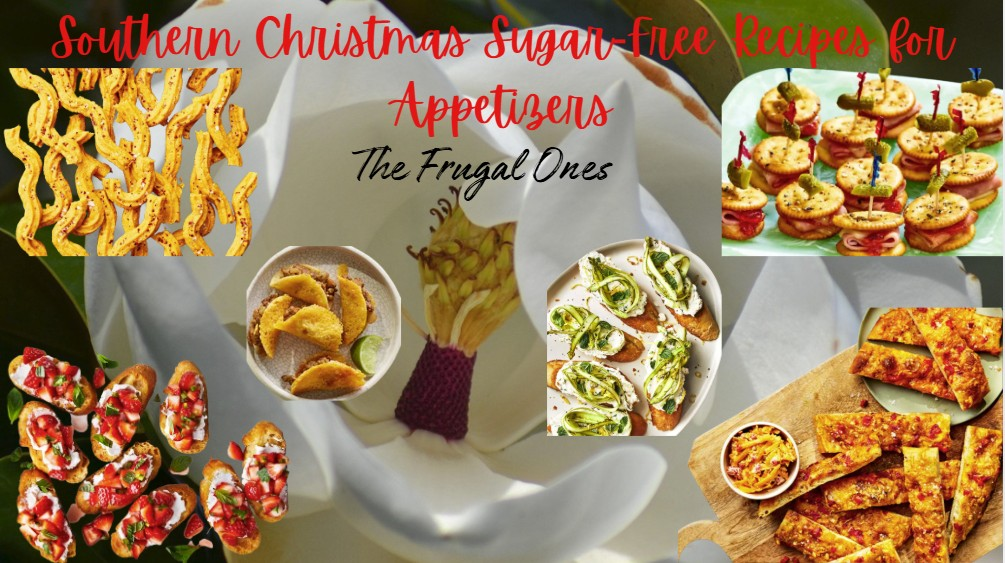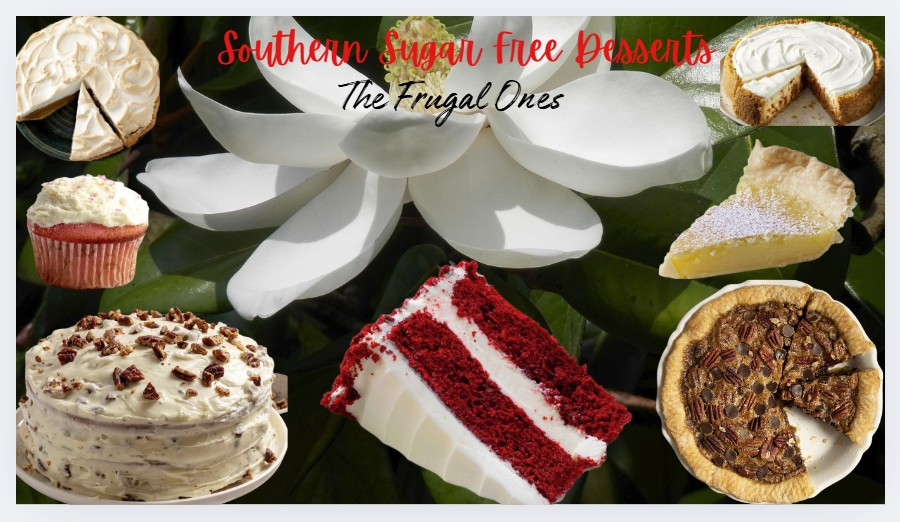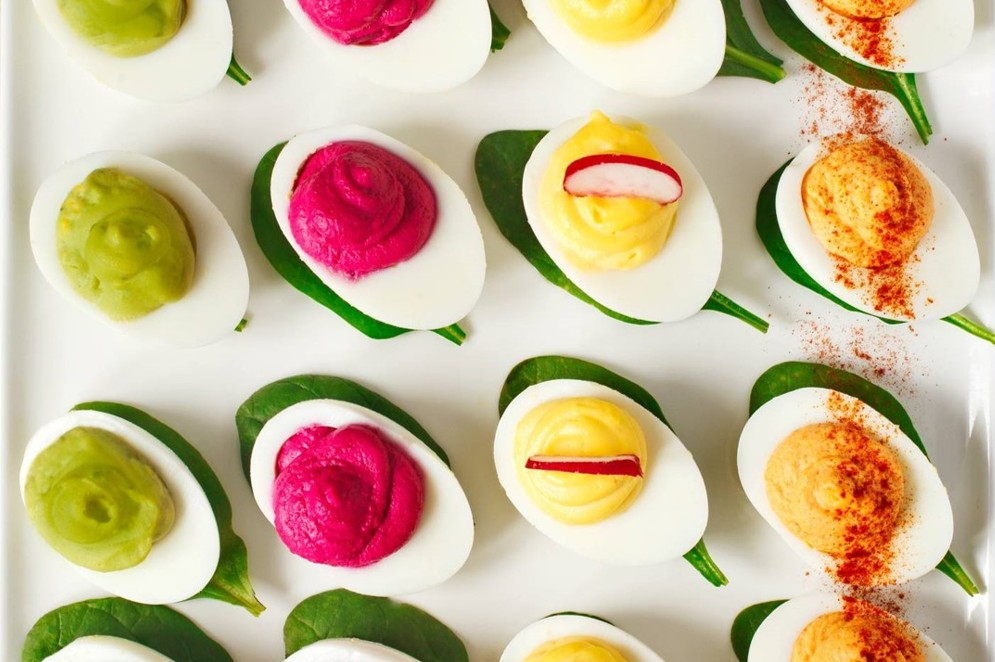After my husband’s Type 2 diagnosis, I rebuilt our cookie tin from scratch. Same tins, same ribbons, big flavor, smarter pantry. I learned fast that sugar free can still taste like home when you respect structure, sweetness, and texture. Are you ready for sugar-free recipe conversions made easy?
You’ll learn how to swap sugar without wrecking crumb, keep moisture in cakes and cookies, and match that classic caramelized taste with smarter choices. When my husband was diagnosed with Type 2 Diabetes, I started converting all of my recipes to sugar free and carb free, then refined the method so friends and family couldn’t tell the difference.
For this post, “sugar free” means no added sugar, and the use of low or zero calorie sweeteners. Natural sugars in dairy or fruit may still be present, depending on the recipe (I’ll flag when it matters).
What’s ahead: quick sugar science, sweetener swaps that actually work, how to adjust flour, fat, and flavor, step-by-step conversions, troubleshooting common fails, and storage that protects texture. You’ll walk away with a repeatable process and reliable ratios. Let’s get baking with confidence.
- Sugar-free baking 101: what sugar does and how to replace it
- Sweetener swaps that actually work in baking
- Flours, fats, dairy, and flavor boosters that keep desserts delicious
- Sugar-Free Recipe Conversions Made Easy, step by step
- Troubleshooting sugar-free bakes: quick fixes that work
- Storage and make-ahead for sugar-free treats
Sugar-free baking 101: what sugar does and how to replace it
When I first pulled sugar from my cookie dough, everything changed. Cookies spread less, cakes baked pale, and muffins turned dry. It was not a flavor problem, it was a structure problem. Once I treated sugar like a building block, the bakes came back to life.
Here is the key idea. Sugar does several jobs at once. When you remove it, you need a plan to replace sweetness and bulk, then support moisture and browning with other ingredients. Do that, and your recipes stay familiar, just smarter.
What does sugar do in a recipe?
Sugar is more than sweet. It affects texture, color, and even how a batter holds water. Think of it as both seasoning and scaffolding.
- Sweetness: This one is obvious. Sugar sets the perceived sweetness and balances acid and salt. When you remove it, flavors can taste flat or sharp, so you must add a sweetener that hits the same level.
- Bulk: Granulated sugar adds mass and volume. It is a dry ingredient that still melts and fills space in a batter. Without bulk, cakes sink, cookies spread oddly, and ice creams turn icy.
- Moisture retention: Sugar is hygroscopic. It draws and holds water, which keeps bakes soft for longer. Take it out and you need another water binder, or things dry out fast.
- Browning: Sugar supports Maillard browning and caramelization. It creates that golden crust and toasty notes. Remove it and your bakes can look pale and taste less complex.
- Tenderness: Sugar interferes with gluten formation in wheat-based recipes. That softens crumb and prevents toughness. Without it, structure can get tight. Tenderizers like fat, egg yolks, or almond flour help here.
The takeaway: replace sweetness and bulk on purpose, then backstop moisture and color with a smart sweetener choice, a little extra fat, or a splash of milk for lactose browning.
Meet the top sugar-free sweeteners
I keep three main options in my pantry because each shines for a different reason. Here is the quick view you can screenshot and use.
| Sweetener | Best For | Pros | Cons | Basic Use Ratio |
|---|---|---|---|---|
| Allulose | Cakes, muffins, sauces | Great browning, smooth texture, draws moisture | Can over-brown; mild laxation for some people | 1 cup sugar to 1 cup allulose by volume, or 200 g per cup by weight |
| Erythritol + monk fruit blends | Cookies, crusts, streusels | Crisp snap, good structure, little spread | Can feel cool on tongue, weaker browning | Use 1:1 for sugar by volume unless label says otherwise |
| Stevia (liquid or powder) | Boosting sweetness in blends | Very sweet in tiny amounts, stable in heat | No bulk, can be bitter on its own | Use drops or small pinches in blends only |
A few notes from my tests:
- Allulose behaves more like sugar than most. It browns, it holds moisture, and it dissolves smoothly. I swap by volume at 1:1, or weigh it at 200 g per cup when I want consistent results.
- Erythritol blends with monk fruit give snap and structure. They are perfect for crisp cookies and tart shells. The cooling feel shows up most in no-bake treats or mint flavors. In baked goods, it is milder.
- Stevia is a booster, not a base. It adds high sweetness but brings no bulk. A blend hides bitterness and keeps flavor clean.
- Powdered versions help a lot in frostings and meringues. They dissolve better and prevent grit. I keep powdered allulose and a powdered erythritol blend on hand for icings and whipped toppings.
How to pick the right sweetener for each job
I follow a simple rule set when I convert a recipe. It removes guesswork and saves time.
- Moist cakes and sauces: allulose. It keeps crumb moist and creates gentle browning, which helps when you miss sugar’s caramel notes. In sauces and glazes, it dissolves cleanly.
- Snappy cookies and crusts: erythritol plus monk fruit. You get crisp edges, steady structure, and neat cuts for bars. Add a little extra vanilla to mask cooling, if needed.
- Many cakes: a 50:50 blend of allulose and an erythritol blend. This balances moisture with structure. I use it for loaf cakes, snack cakes, and cupcakes. If the cake is very tender, like chiffon, I lean 60 percent allulose.
- Meringues: powdered allulose for a satiny texture. It dissolves fast and reduces grit. Bake at a slightly lower temp to avoid over-browning.
A quick example that works: For a standard chocolate chip cookie that originally called for 200 g sugar, use 200 g of an erythritol plus monk fruit blend. If you want a chewier center, replace 25 to 50 g of that with allulose, then watch the color near the end of the bake.
Labels and hidden sugars: shop smart
Packages can look sugar free at a glance, but the fine print tells the truth. I read ingredient lists every time, even on brands I trust.
- Scan for added sugars. Look for cane sugar, honey, maple syrup, brown rice syrup, malt syrup, agave, dextrose, and maltodextrin. These act like sugar in baking and in your body.
- Watch “fiber” syrups. Some tapioca or isomaltooligosaccharide syrups behave like sugar when heated. They can spike carbs and also brown quickly. Use with care, or skip them for baking.
- Choose clean sweeteners when you do not need fillers. Some products include inulin, oligosaccharides, or dextrins to add bulk. That can help in cakes, but it can also cause tummy trouble. If you only need sweetness, buy the pure form.
- Check serving sizes. Labels sometimes list tiny portions to hit zero grams of sugar. Look at the total carbs for the amount you will actually use.
Smart shopping saves you from mystery results in the oven. It also keeps your pantry consistent so every test builds on the last. When my husband was first diagnosed, this one habit cut my failures in half.
Key tip: pick one main sweetener for structure, then adjust flavor with extracts, salt, cocoa, or citrus. Sweetness does not carry the whole show. Your spices, acid, and fat do a lot of heavy lifting too.
Sweetener swaps that actually work in baking
The trick to sugar-free baking is not just sweetness, it is texture. You want the same flow in caramel, the same snap in a cookie, and a crumb that holds together without turning dry. That means choosing sweeteners that behave like sugar where it matters.
These are the swaps I reach for after many test batches in my own kitchen. They are reliable, repeatable, and easy to scale. If you keep allulose and an erythritol blend on hand, you can cover almost every bake.
Allulose for caramels, sauces, and moist cakes
Allulose is the closest stand-in for sugar when you need smooth flow and real browning. It dissolves cleanly, it does not crystallize, and it pulls in moisture, which keeps cakes tender.
- Use 1 cup allulose for 1 cup sugar by volume, or 200 g allulose per cup of sugar by weight.
- Candy stages track the same. Cook to the same thermometer temperatures you would use with sugar.
- Expect steady browning and silky texture. Sauces stay smooth, candies set glassy.
In caramel sauce, allulose behaves like a dream. Warm it with cream and butter, bring it to temp, and it will stay pourable in the fridge. I lower the oven temperature by 15 to 25 degrees for cakes with a lot of allulose, since it browns faster. If a loaf gets dark early, I tent with foil for the last 10 minutes.
Why bakers love it:
- No crystallization: You can skip the corn syrup crutch in sauces.
- Moist crumb: Allulose is hygroscopic, so cakes and muffins stay tender on day two.
- Clean flavor: It reads like sugar without a cooling effect.
Quick example: For flan or crème caramel, swap sugar 1:1 with allulose and cook to deep amber. The custard bakes as usual and unmolds with a glossy syrup.
Erythritol and monk fruit blends for crunch
When you want snap, reach for an erythritol plus monk fruit blend. It bakes crisp, sets clean edges, and re-crisps after cooling, which is perfect for cookies, crusts, and streusel.
- Start with 90 percent of the sugar amount, then adjust to taste.
- Best for cookies and crusts that need snap. They firm up as they cool.
- To prevent dry cookies, add 1 to 2 tablespoons neutral oil or 1 tablespoon glycerin. This improves chew and softens the cooling aftertaste.
Practical ratios:
- Original recipe calls for 200 g sugar. Start with 180 g of the blend. Taste the dough, then add 10 to 20 g more if needed.
- For cut-out cookies, chill the dough and bake to full color around the edges. Let them cool on the sheet so they set crisp.
A few extra tips from my tins:
- Grind it if your blend is coarse. A quick blitz gives you a finer texture in shortbread or lemon bars.
- Flavor cover: A touch more vanilla or a pinch of espresso powder smooths any cooling note.
- Fat helps: That spoon of oil or glycerin is small, but it keeps the center from drying out, especially in almond flour cookies.
Blend for balance in cakes
Many cakes taste best with a two-sweetener strategy. A 50:50 mix of allulose and an erythritol blend gives moisture plus structure, which keeps slices neat and the crumb tender.
- Use a 50:50 mix of allulose and an erythritol blend for many cakes.
- You get moisture from allulose and structure from erythritol, which keeps slices neat.
- Start 1:1 total weight versus the sugar in the original recipe.
How to use it:
- Weigh the sugar in the original recipe. Match that weight with your blend. If the recipe lists cups, convert to grams first for accuracy.
- Cream the blend with butter as usual. It aerates like sugar, especially with the erythritol in the mix.
- Watch color. This blend browns, but not as deeply as allulose alone. If you want more color, brush the top with milk before baking.
Dial it in:
- For extra tender cakes (chiffon, angel, very light sponges), push to 60 percent allulose and 40 percent erythritol blend.
- If the crumb feels a bit dry on day two, brush slices with simple syrup made from allulose and water, or add 1 tablespoon sour cream to the batter next time.
Example that converts cleanly: A 9 by 5 banana bread with 200 g sugar becomes 100 g allulose plus 100 g erythritol blend. Bake at the same temperature, check 5 minutes early, and let it cool in the pan for 15 minutes before turning out.
Meringues and pavlovas without grit
Meringue shows every flaw, so swap smart. Powdered allulose gives a fine, satiny texture with a clean bite, and it avoids the gritty finish some blends leave behind.
- Choose powdered allulose for a fine, satiny texture.
- Swap 1:1 by weight versus sugar and whip to glossy peaks.
- Expect gentle browning; bake low and slow.
Method that works:
- Add 1 teaspoon vinegar or lemon juice and 1 teaspoon cornstarch per 4 egg whites, just like classic pavlova. This helps stability and that marshmallow center.
- Bake at 225 to 250 F until dry to the touch, then let the shells cool in the oven with the door cracked.
- Store in an airtight tin with a packet of silica gel if you have one. Allulose can pull moisture from the air, so sealing matters.
Result: crisp exterior, tender center, no sandiness. Top with lightly sweetened whipped cream and berries for balance.
Why not stevia alone?
Stevia is intense and can taste bitter when used on its own. It also adds no bulk, which means it cannot replace sugar’s structure in a batter or dough.
- Liquid stevia can taste bitter and does not add bulk.
- If you like its taste, pair it with a bulk sweetener such as allulose or an erythritol blend.
How to use it well:
- Treat stevia like a booster. Use a bulk sweetener for structure, then add a few drops of stevia to raise sweetness without changing texture.
- Start with 80 to 90 percent of the original sugar’s weight in a bulk sweetener, then taste the batter and add stevia drop by drop. Stop when it reads sweet, not sharp.
Good targets:
- Muffins and quick breads: bulk sweetener at full weight, plus 2 to 4 drops stevia per batch if you want it sweeter.
- Frostings: powdered allulose for body, then a pinch of stevia to lift sweetness without adding grit.
Bottom line: stevia can sit in the supporting role. Let allulose or an erythritol blend handle the heavy lifting so you get the right bite every time.
Flours, fats, dairy, and flavor boosters that keep desserts delicious
Pulling sugar pulls more than sweetness. It shifts structure, moisture, and color, so you need other ingredients to pick up the slack. Flour choice sets the bite, fat drives tenderness and color, dairy lifts crumb, and flavor boosters do the heavy seasoning. Get these right and your sugar-free bakes taste like they always did, just smarter.
Flour choices: classic bite or gluten-free
Flour is your anchor. It controls shape, rise, and chew, which matter even more when sugar is low.
- For the vintage bite, use all-purpose flour. It brings steady gluten development that supports rise in cakes and cookies. Keep the original amount or trim only 5 percent if your batter feels loose.
- For gluten-free baking, use a 1:1 blend with xanthan gum. The gum adds elasticity so your cakes do not crumble and your cookies do not spread flat. If your blend does not include gum, add 1/4 teaspoon per cup of flour.
- Avoid cutting too much flour, or you lose shape and rise. Sugar-free batters already hold less moisture, so the flour has to do its job. Skimping here makes squat loaves and greasy cookies.
Helpful tweaks:
- If crumb feels tight, swap 2 to 3 tablespoons of the flour with almond flour for tenderness.
- For extra moisture in muffins, add 1 tablespoon oat flour per cup of flour. It binds water without heavy chew.
- Sift dry ingredients. Aeration helps when you are short on sugar’s tenderizing effect.
Quick check: scoop dough and press it. If it cracks deeply, add 1 to 2 teaspoons milk to loosen. If it smears, chill 20 minutes to firm butter and reset structure.
Fats for tenderness and color
Fat takes the lead when sugar steps back. It tenderizes crumb, carries flavor, and builds browning.
- Use real butter for flavor and browning. Butter’s milk solids toast in the oven, which adds color that sugar-free batters often miss. Cream it well to trap air and boost lift.
- Add a splash of neutral oil for moisture in cookies and cakes that run dry when sugar is low. Start with 1 to 2 tablespoons per batch. Oil stays soft at room temp, so it keeps the bite tender on day two.
- If using coconut oil, note it firms when cool. Balance with butter for better texture. I like 50 percent butter and 50 percent coconut oil for cookies that hold shape but do not turn waxy.
Smart ratios that work:
- Cookies: 85 to 90 percent butter by weight, 10 to 15 percent neutral oil if the dough seems dry.
- Cakes: replace 2 tablespoons of the butter with oil for a softer crumb.
- Quick bread glaze: 1 teaspoon butter in warm allulose glaze boosts shine and color.
Flavor tip: brown 2 to 3 tablespoons of the butter for nutty notes, then cool before mixing. It adds depth you usually get from caramelized sugar.
Dairy that lifts crumb and adds tang
Dairy is your quiet hero. It softens crumb, feeds browning, and balances sweeteners with gentle acid.
- Buttermilk or sour cream softens crumb and adds tang. Their acidity tenderizes gluten and their proteins help with color.
- They help with browning and rise when sugar is low. Lactose browns in the oven, which gives you that golden top you want.
- Cocoa cakes love 1 to 2 teaspoons vinegar with buttermilk for that old-school lift. The acid hits the baking soda, releasing gas fast and raising the batter.
How to use dairy well:
- Swap half the milk in cakes for buttermilk, then balance leavening. For every 1 cup buttermilk, remove 1 teaspoon baking powder and add 1/2 teaspoon baking soda.
- Stir 2 to 3 tablespoons sour cream into cookie doughs that feel dry. You get softer centers without losing shape.
- Greek yogurt works too. Thin it with a little milk to match buttermilk’s flow, then use the same leavening adjustment.
Small upgrades:
- Brush loaf cakes with a milk wash before baking for color.
- Whisk 1 tablespoon powdered milk into dry ingredients. It boosts browning and adds body.
Flavor boosters that sing without sugar
When sugar steps back, seasoning steps forward. Build layers so every bite tastes full and warm.
- Espresso powder deepens chocolate and spice. Use 1/2 to 1 teaspoon in brownies, chocolate cake, and gingerbread. You will not taste coffee, just deeper cocoa and warmer spice.
- Vanilla bean paste adds warmth and visible specks. One teaspoon equals a pod’s worth of aroma. Paste reads rounder than extract in sugar-free batters.
- Citrus zest brightens fruitcake and shortbread. Use the zest of 1 lemon or orange per batch, rubbed into sweetener to release oils.
- Warm spices like cinnamon, clove, nutmeg, and cardamom love a quick bloom. Melt 1 tablespoon butter, stir in the spices over low heat for 30 seconds, then add to your batter. The aroma gets bold and smooth.
- A pinch of salt sharpens sweetness and balances bitter notes. I add 1/4 teaspoon fine salt per cup of flour, then finish with flaky salt on cookies for a clean hit.
A few combos I reach for:
- Chocolate loaf: cocoa, espresso powder, vanilla paste, and a pinch of cinnamon.
- Lemon shortbread: lemon zest, a whisper of almond extract, and flaky salt on top.
- Apple muffins: cinnamon, nutmeg, clove, plus browned butter for a toasty edge.
Better chocolate and fruit mix-ins
High quality mix-ins carry a lot of the flavor load. Choose well and prep them to play nice in low-sugar batters.
- Use high quality unsweetened cocoa and sugar-free chips. Natural cocoa tastes brighter, Dutch-process tastes smoother and darker. Match your leavening, or use a blend for balance.
- Choose unsweetened dried fruit. To lower sticky surface sugars, rinse lightly, pat dry, then finely chop so pieces spread out. You get pop in every bite without sticky pockets.
Best practices:
- Toss chips or fruit with 1 teaspoon flour before folding in. This helps suspend them in the batter.
- For cocoa cakes, add 1 tablespoon strong coffee to wake up the cocoa. It reads as richer chocolate, not coffee.
- If using very dark cocoa, add a touch more salt and vanilla to keep flavor round.
Quick guide to cocoa choices:
- Natural cocoa pairs well with baking soda and buttermilk for lift.
- Dutch-process pairs well with baking powder and gives a deeper color.
- A 50:50 blend gives color plus a lively cocoa note.
Final tip: keep mix-ins modest. Aim for 3/4 to 1 cup total add-ins per standard batch. Too much bulk can weigh down rise, which is harder to recover without sugar.
Sugar-Free Recipe Conversions Made Easy, step by step
Converting your favorite bakes goes smoothly when you follow a clear plan. I use a simple flow: match the sweetener to the recipe, choose starting ratios, adjust bake time and color, fix texture in real time, then taste and tweak. When my husband was diagnosed with Type 2 Diabetes, I learned to make small, smart changes and record what worked. You can do the same, one batch at a time.
Match the sweetener to the recipe type
Choose your sweetener by job, not by brand loyalty. Each one brings a different mix of moisture, browning, and structure.
- Cakes and custards: start with allulose. It dissolves cleanly, adds moisture, and browns like sugar. Custards set silky, and cakes stay soft on day two. If you love flan, crème caramel, or panna cotta, allulose gives the classic finish without grit.
- Cookies and crusts: start with an erythritol plus monk fruit blend. You get crisp edges, tidy cuts, and reliable snap after cooling. It holds shape for cut-outs and tart shells. A touch more vanilla or spice can smooth the light cooling feel.
- Many cakes: try a 50:50 allulose plus erythritol blend for moisture and clean slices. The allulose keeps crumb tender, while erythritol supports structure so slices do not crumble. This balance works for loaf cakes, snack cakes, and cupcakes.
Quick examples that work:
- Custard pie: use allulose for a clean set and even color.
- Almond tart crust: use an erythritol blend for sharp edges and a firm base.
- Banana bread: blend half allulose and half erythritol for a moist loaf that cuts neat.
Set your starting ratios and weights
Start with reliable ratios, then adjust by taste and texture. Weighing ingredients keeps results steady across batches.
- Replace 1 cup sugar with 1 cup allulose by volume, or 200 g by weight. This one swap covers most cakes, muffins, sauces, and custards. If a recipe lists cups, convert to grams before mixing so your moisture balance stays true.
- For erythritol blends, start with 75 to 90 percent of the sugar weight, then adjust to taste. Many blends taste quite sweet upfront but do not brown as deeply. If a dough tastes flat, raise by 5 to 10 percent and retest.
- Frostings: use powdered allulose; begin with 1.25 cups powdered allulose for each 1 cup powdered sugar in the original. Powdered allulose dissolves fast and stays smooth. If the frosting feels loose, sift in 1 to 2 tablespoons more and beat again.
Helpful cues:
- If batter tastes right but seems loose, do not add more sweetener. Add a tablespoon of flour or cocoa to tighten.
- If sweetness is close but not there, add a drop or two of monk fruit or a pinch of stevia as a booster.
Adjust for bake time, color, and structure
Sugar-free bakes look done differently. Use sight, touch, and smell, not only the timer.
- Allulose browns earlier; keep the same oven temperature but often add 2 to 5 minutes. It can color fast on top while the center needs a bit more time. If browning races ahead, tent with foil near the end.
- Watch color and doneness cues, not only the clock. Look for dry edges, a springy center, and a clean toothpick with a few moist crumbs. Cookies should show set edges and a soft center that firms as they cool.
- For even rise, mix well, avoid overbaking, and let batters rest 5 to 10 minutes before the oven. Resting reduces tunneling and helps starch hydrate, which is useful when sugar is low.
Small upgrades that help:
- Brush the top with milk for color on pale batters.
- Rotate pans two-thirds through the bake for even browning.
Fix dry or crumbly textures on the fly
Low sugar can read dry if the batter is tight. You can fix that before it hits the oven.
- Add 1 to 2 tablespoons milk or cream if batter seems tight. This relaxes the mix so air can be trapped during baking. I reach for buttermilk when I want extra tenderness and color.
- For cookies with lots of erythritol, add 1 to 2 tablespoons neutral oil or 1 tablespoon glycerin to improve chew. Oil keeps the bite soft on day two. Glycerin binds water and reduces a sandy feel.
- If dough spreads too much, chill 20 to 30 minutes. Cold dough holds shape, which is key for cut-outs and sandwich cookies.
More quick fixes:
- If a cake batter looks curdled, beat 30 seconds longer to emulsify. It usually bakes fine.
- If cookie dough feels greasy, fold in 1 tablespoon flour to absorb excess fat.
Taste, then tweak like a pro
Final flavor checks matter, especially for cold desserts and spiced bakes. Sweetness shifts with temperature and time.
- Cold desserts taste less sweet. Chill, taste, then adjust with a teaspoon of allulose or a drop or two of monk fruit. Icebox pies, cheesecake, and panna cotta read 10 to 20 percent less sweet once cold, so finish the mix at fridge temp when you can.
- Example: For ginger snaps, use an erythritol and monk fruit blend, bake to deep golden, cool on the sheet; they crisp as they set. The spices bloom, the edges harden, and the snap shows up at room temperature.
Practical tasting routine:
- Taste batters and doughs before baking, then again after cooling.
- If the flavor is hollow, add a pinch of salt or a touch of vanilla, not only more sweetener.
- For day-two dryness, brush slices with a quick allulose syrup, equal parts allulose and hot water.
Key takeaways to keep handy:
- Pick the sweetener for the job, not just for sweetness.
- Weigh your swaps for accuracy and fewer surprises.
- Trust visual cues, then fine-tune texture with small tweaks.
- Taste cold when the dessert will be served cold, then adjust with a light hand.
Follow this flow on your next bake and you will see familiar crumbs, clean slices, and flavor that lands. It is a simple, steady process that turns sugar-free into second nature.
Troubleshooting sugar-free bakes: quick fixes that work
Sugar-free baking has its own quirks. Dough can feel dry, cookies may spread oddly, and cakes sometimes bake pale. None of that means you failed. It just means you need a quick adjustment for structure, moisture, or color. Here are fixes I use in real time, with exact amounts you can apply to your dough or batter today.
Dry or crumbly
Low or no sugar means less water-binding. That can lead to a tight crumb or a cookie that shatters instead of bends. Add moisture and tenderizers, then manage your bake time.
- Add moisture: 1 to 2 tablespoons milk, cream, or sour cream. Stir in gently until the dough feels supple and holds together when pressed. Sour cream gives a creamy tang and helps with color.
- Add fat: 1 tablespoon neutral oil or an extra egg yolk. Oil keeps cookies soft on day two. An egg yolk adds richness and a gentle bind without making the dough wet.
- Bake slightly less time and cool on the pan to set. Pull cookies when edges are set and centers look soft. Let cakes cool in the pan for 10 to 15 minutes so the crumb sets and stays moist.
Quick read of the dough helps. If it cracks deeply when rolled, add a teaspoon of milk at a time until it smooths out. If a cake batter looks thick and sticky, whisk in a tablespoon of milk before pouring into the pan.
Pro tip: a 1:1 mix of allulose and an erythritol blend can run a touch drier than sugar in some doughs. That extra spoon of oil often fixes it without changing flavor.
Gritty texture or cooling aftertaste
Erythritol blends can feel gritty if they do not dissolve well. They can also cool the tongue, especially in no-bake treats. Small technique shifts smooth both issues.
- Use powdered sweeteners for fine textures. Powdered allulose or a powdered erythritol blend dissolves fast and avoids sandiness in frostings, cheesecakes, and meringues. If you only have granulated, pulse it in a blender until fine.
- Blend allulose with erythritol to smooth cooling. A 50:50 split keeps structure from erythritol and adds the plush mouthfeel of allulose. It reads more like sugar on the palate.
- Let cookies rest fully; many crisp and smooth out after cooling. That cooling period reduces any cooling note and sets the crumb. Taste again at room temperature before you change the formula.
Extra help:
- Add 1 teaspoon glycerin per batch of cookies to reduce a sandy chew. It binds water and softens texture.
- Boost vanilla or warm spice to distract from mild cooling. A pinch of cinnamon or espresso powder in chocolate cookies works well.
Poor rise or spread
Sugar adds bulk, weakens gluten, and affects how air is trapped. Without it, rise and spread can shift. Focus on leavening, aeration, and temperature control.
- Check baking powder and soda are fresh. Replace every 6 months. If they are flat, your cakes and cookies will be too.
- Beat butter and sweetener long enough to aerate. Cream 2 to 4 minutes until pale and fluffy. You want tiny air pockets to help lift the crumb.
- Chill cookie dough to control spread. 20 to 30 minutes is enough for most doughs. Chilled fat helps cookies hold shape, then relax in the oven.
- Use light-colored pans to avoid over-browning bottoms. Dark pans absorb heat quickly, which can set the edges before the center has time to lift.
More quick wins:
- Weigh flour. Too much flour crushes rise. If cookies puff but stay domed, press the dough balls gently before baking to encourage even spread.
- For cakes that rise unevenly, smooth the batter into corners, tap the pan twice on the counter, then bake on the center rack.
Pale color and weak flavor
Less sugar often means less browning and fewer caramel notes. You can still get a golden top and rich flavor with small shifts in ingredients and technique.
- With less sugar, increase flavor boosters: more vanilla, spice, citrus zest, or a pinch more salt. Start with an extra 1/2 teaspoon vanilla or the zest of 1 lemon or orange. Salt sharpens sweet notes and balances bitterness from cocoa or strong spices.
- Use buttermilk or sour cream for better browning. Lactose browns in the oven and adds tenderness. Swap some or all of the milk for buttermilk, then balance leavening if needed.
- Consider a brief broil at the end for color, but watch closely. Pull as soon as the top turns golden. One minute can be perfect, two can scorch.
Other color builders:
- Brush cakes with milk before baking. A thin coat boosts browning on pale batters.
- Add 1 tablespoon powdered milk to dry ingredients. It encourages Maillard browning and rounds out flavor.
Flavor idea bank:
- Chocolate: a pinch of espresso powder deepens cocoa without tasting like coffee.
- Vanilla: a mix of extract and paste reads warmer and fuller.
- Spice: bloom cinnamon, ginger, or cardamom in a teaspoon of melted butter, then add to the batter.
Candy and caramel tips
Sugar-free candy can be smooth and glossy when you choose the right sweetener and control heat. Allulose is your best bet for classic flow and clean snap.
- Use a reliable thermometer and a heavy pot to avoid hot spots. Even heat prevents scorching and helps you hit exact stages.
- Allulose syrups match classic sugar stages; cook to the same temps. Soft ball, firm ball, hard crack, they track as expected. Watch color and smell as backup cues. Allulose browns a bit faster, so keep a steady eye on it.
- Do not stir once boiling for clear toffee; pour and cool on parchment. Stirring after it boils can add bubbles or cloud the finish. Swirl the pan gently if needed.
Working notes from my stove:
- For caramel sauce, warm allulose with water, then add cream and butter off the heat. Return to a brief simmer for a smooth finish. A pinch of salt pulls flavors forward.
- For brittle or toffee, line pans with parchment and warm nuts in the oven first. Warm nuts help the candy spread cleanly and set fast.
- If you see early color on the edges, lower the heat a notch and rotate the pan over the burner to even it out.
Bottom line: quick tweaks solve most sugar-free baking hiccups. Keep moisture handy, respect fresh leavening, push flavor a bit further, and use the right gear for candy. Small changes pay off fast, and your next batch will show it.
Storage and make-ahead for sugar-free treats
Sugar-free sweets age differently because sweeteners handle moisture in their own way. Allulose pulls in water, which keeps cakes plush but can soften crisp edges. Erythritol blends bake crisp, then set even crisper by day two. If you plan storage with these quirks in mind, you get better texture on day one and day five.
I batch-bake for my husband’s work week, so I rely on a simple system: airtight storage, smart wrapping, and quick reheat cues. Use the chart below as a snapshot, then grab the tips in each subsection for best results.
| Treat Type | Room Temp Storage | Refrigerated Storage | Freezer Storage | Quick Note |
|---|---|---|---|---|
| Crisp cookies | Up to 5 days airtight | Not recommended | Up to 2 months | Re-crisp 300°F for 5 minutes |
| Cakes/cupcakes | 1 to 2 days if unfrosted | Up to 4 days wrapped | Slices up to 2 months | Thaw wrapped at room temp |
| Custard pies | Not recommended | 3 to 4 days | 1 to 2 months (well-wrapped) | Keep chilled for safe texture |
| Fruit pies/tarts | 2 to 3 days room temp | 4 to 5 days | Up to 2 months | Reheat 325°F until crust is snappy |
Cookies that stay crisp
Crisp cookies love low humidity and a true airtight seal. Erythritol blends stay snappy if you store them right from the start.
- Store cookies in a tight tin or snap-lid container for up to 5 days. Separate layers with parchment so edges do not soften.
- Freeze up to 2 months. Wrap stacks in plastic, then place in a freezer bag and press out air. Label and date for easy rotation.
- Re-crisp at 300°F for 5 minutes, then cool on the sheet. Cooling on the hot sheet finishes the set and brings back the snap.
- In humid climates, add a food-safe silica packet to each tin. It keeps moisture away from that hard-won crunch.
A few extras that help:
- Keep soft cookies and crisp cookies in separate containers. Moisture migrates and steals crunch overnight.
- For slice-and-bake dough, freeze logs for up to 2 months. Thaw in the fridge until firm but sliceable, then bake straight away for sharp edges.
Flavor stays bright, and the texture improves after a short rest. I often bake one sheet at a time and freeze the rest of the dough to control freshness during the week.
Cakes and cupcakes
Sugar-free cakes keep best when wrapped tight. Allulose helps retain moisture, but you still need smart wrapping to protect crumb and prevent fridge-dry.
- Wrap and chill up to 4 days. For whole cakes, wrap unfrosted layers in plastic, then place in a cake box or container. Frost closer to serving for a cleaner slice.
- Freeze slices up to 2 months. Double-wrap each slice, then stash in a freezer bag. Thaw wrapped at room temperature for the best crumb and to avoid surface condensation.
- Brush layers with a light allulose syrup if needed. Mix equal parts allulose and hot water, cool, then brush on cooled layers before stacking. This keeps the crumb moist without making it sticky.
More ways to keep texture right:
- For cupcakes, freeze unfrosted in a single layer until firm, then bag. Thaw wrapped, frost, and serve the same day for a soft bite and tidy tops.
- Cream cheese or mascarpone frostings keep well for 3 to 4 days in the fridge. Beat briefly before spreading to refresh texture.
- If a chilled cake tastes less sweet, let slices sit 10 minutes at room temp. Cold mutes sweetness by a notch.
Small habit, big payoff: date everything. Rotation keeps flavors fresh and texture close to day-one quality.
Pies and tarts
Pies respond to sweeteners based on filling style. Custard wants a chill for food safety and texture. Fruit pies handle room temp well at first, then chill for longer storage.
- Custard pies: chill 3 to 4 days. Wrap lightly with plastic once fully cooled. Keep the crust crisp by baking fully in the first place and storing on a rack inside the fridge to let air circulate.
- Fruit pies: 2 to 3 days at room temp, longer if chilled. After day two, cover loosely and refrigerate up to day five. The filling firms as it cools, which helps clean slices.
- Reheat fruit pies at 325°F until the crust is snappy. Place on a foil-lined sheet, tent the edges if they color too fast, and heat until the bottom feels crisp again.
Extra steps that prevent soggy bottoms:
- Cool fruit pies on a rack at least 3 hours before storage. Steam must escape or the crust softens.
- For tarts with pastry cream or ricotta, chill uncovered for 30 minutes to set the surface, then cover. This avoids condensation drips on delicate fillings.
- Skip the microwave for reheating crusts. Use the oven or a toaster oven so you get back that clean, flaky bite.
If you bake ahead, freeze fruit pies unbaked. Wrap tightly, then bake from frozen at 20 to 30 minutes longer than usual. You get a fresher crust and a bubbling, bright filling on serving day.
My first few recipes were disasters, luckily, I chose a day when we were not expecting anyone.

Southern Sugar Free Desserts Guide 2025, Cakes and Pies You’ll Love
New Orleans Cajun and Creole Thanksgiving Recipes (Sugar-Free)
Delicious Cajun and Creole Recipes You’ll Love (Sugar Free)
Best Low Carb Appetizers for NYE, Quick and Festive
Keto Party Snacks for New Year’s Eve, Bold and Simple
Best 40+ Diabetic Friendly Beef Casseroles, Easy Weeknight Ideas
50+ Best Keto Thanksgiving Recipes (Low Carb, Sugar Free)
Keto Christmas, 100+Low-Carb Recipes You’ll Love
40+ Best DASH Diet Recipes the Whole Family Will Love
Keto Thanksgiving Made Easy, 40+ Low-Carb Mains, Sides, Desserts
Keto Christmas, 100+Low-Carb Recipes You’ll Love
Comfort Food Vibes, 30+Low Carb Casseroles Made Simple
Comfort Food Vibes: 50+Low Carb Side Dishes Made Simple
Comfort Food Vibes, 30+Low Carb Side Dishes Made Simple
The Best 20+ Sugar Free Cheesecake Recipes for the Holidays
Comfort Food Vibes, 30+Low Carb Side Dishes Made Simple
Southern Christmas Sugar-Free Recipes for a Full Brunch You’ll Love

